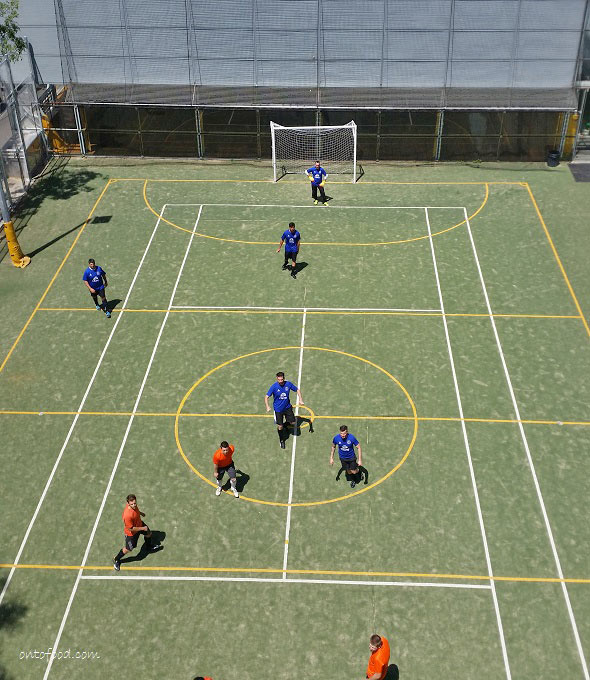Start-up mode > click the exercise button
 Bookmark / Print /
Bookmark / Print / - Details
- 1 Comment
It seems the hardest thing to do some time is to get started exercising, particularly if you are introducing new routines or taking steps towards better health and well-being. Just the thought of doing different activities can be daunting. You ask friends, you sort advice from people that have made changes, from professionals, google it or watch it on TV. You get a myriad of advice and some of it is even conflicting. In the end what works is what works for YOU and you simply just have to do it! Do something, well any movement actually.
If you view exercise as a chore then you are most likely not going to enjoy it. And if you don’t enjoy it, well it most likely will be short lived. No doubt, there are those of you that will drag yourself to the gym all for end result for as long as that lasts.
How about making things easier on yourself? Find ways to exercise that you enjoy, gives you results and fits into your lifestyle.
Why enjoy it?
Why do it if you don’t enjoy it? Life is too short to be whinging and moaning about exercise. Exercise is one of the keys to keeping our body in good condition and enjoyment helps us tone our mind and soul. Find activities that you like to do. If you like dancing or like talking for instance find an exercise regime that incorporates these elements.
You get results
It is great to actual start the exercise but if you are hardly seeing any good results over time, why continue to do the same thing? Be careful here, when you are judging what results are remember they come in all different forms. You might see an increase in stamina, increase in flexibility, not to mention becoming clear minded, release stress and friendships made. If you are not seeing any results it might mean you need to modify your approach or change to a different type of exercise. Something you couldn’t do years ago doesn’t mean you can’t do it now. It’s possible, think of today and challenge yourself.
It fits into your life style
Sometimes you have checked all the above. We get enjoyment, we get results but the exercise takes us away from a partner, friends, family or other priorities and causes conflicts. Find out what is important in your life and prioritise what aspects you want to preserve. It might be that instead of doing a night class you find a morning one. Or you walk at lunch time instead of at night when you are tired. Whatever it is have a think about how you can re-arrange what you do and make it fit into your current lifestyle.
Starting with small steps
Starting for some is about getting back into a familiar routine, others it is just getting started. You may be so out of condition that you need to try small steps just to get into the exercise momentum. Instead of going for that Biggest Loser type regime try introducing extra exercise into your day. Some examples:
- If you usually drive to the station, try walking.
- Get off 1 station, 1 bus stop before your usual stop and walk.
- If you usually stand on the side of an escalator aim to walk up and down the escalators.
- Walk faster than you would usually walk.
- If you usually eat at your desk at work substitute it with walking to a park or bench and eat there.
- You can even work in exercise while your children are doing their activities, even while you are watching be creative!
You get the idea! Do simple manageable things that you can incorporate into your daily or weekly routines. This way you gradually introduce more naturally occurring exercise into your current routines. Your body will get use to moving and then your next step will be to introduce activities which are more complex and demanding like at a gym, yoga, bike riding, salsa dancing etc.
Remember, the three elements for a more productive long lasting exercise routine: enjoyment, results and fits into your lifestyle. If you are just starting out, start small and build into the more complex activities. And most of all have fun!
- In 2011-12, adults spent an average of just over 30 minutes per day doing physical activity. However, against the National Physical Activity Guidelines for adults “to do at least 30 minutes of moderate intensity physical activity on most days”, only 43% of adults actually met the “sufficiently active” threshold.
- The highest levels of physical activity were among the young adults with 53% of 18–24 year olds being classed as sufficiently active. Levels of physical activity tended to decline in older ages, with the lowest being among people aged 75 years and over, where the average time spent in physical activity was 20 minutes per day, and just one in four this age were classified as sufficiently active against the guidelines.
- Levels of sufficient physical activity were associated with a range of factors:
- Relative socioeconomic disadvantage: Adults in the least disadvantaged quintile were 1.5 times more likely to have done sufficient physical activity compared with those in the most disadvantaged quintile.
- Health status: Adults who described their health as “excellent” were over twice as likely to have done sufficient physical activity compared with people with “poor” self-assessed health.
- Body mass index (BMI): The underweight/normal weight population were 1.4 times more likely to have done sufficient physical activity compared with the obese population.
- Smoking status: ex–smokers and people who never smoked were 1.2 times more likely to have done sufficient physical activity compared with current smokers.
- Sedentary activity occupied an average 39 hours per week for adults, with close to 10 hours of this sitting at work. People employed in more sedentary occupations such as clerical and administrative workers spent on average 22 hours a week sitting for work.
- Watching TV was the most prevalent sedentary activity, at nearly 13 hours a week, peaking at over 19 hours per week on average for people aged 75 and over. Using the computer or Internet (for non-work purposes) peaked at almost 9 hours per week for 18–24 year olds.
- The adults who participated in the pedometer study, recorded an average of 7,400 steps per day. Less than one in five adults (19%) recorded 10,000 steps per day on average.
According to the Australian Bureau of Statics key findings as at 2011-2012:



















So True
Once we start exercising we begin to realise just how enjoyable it can be 🙂